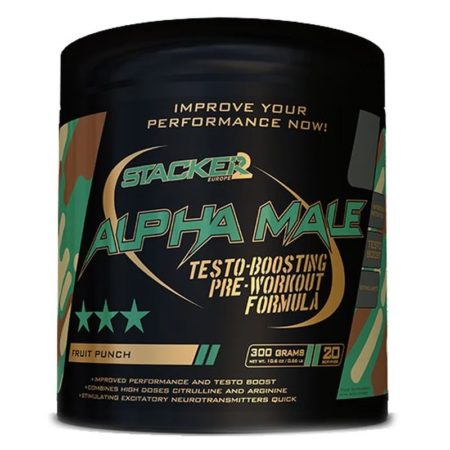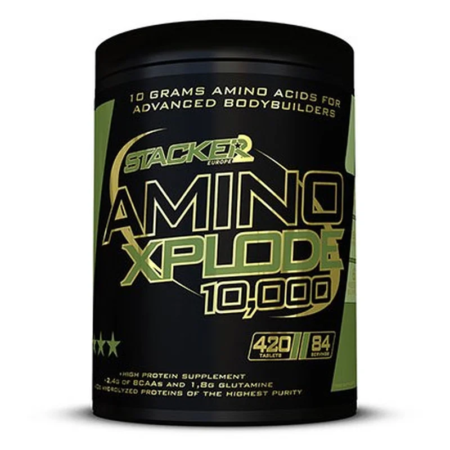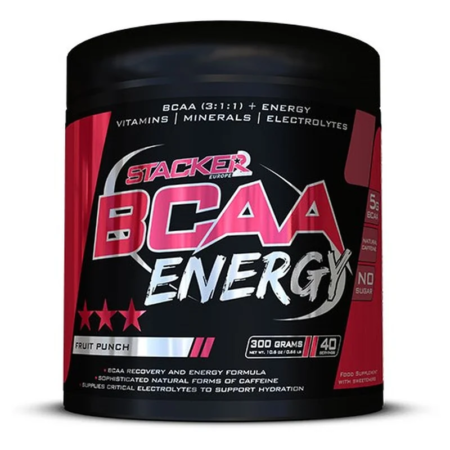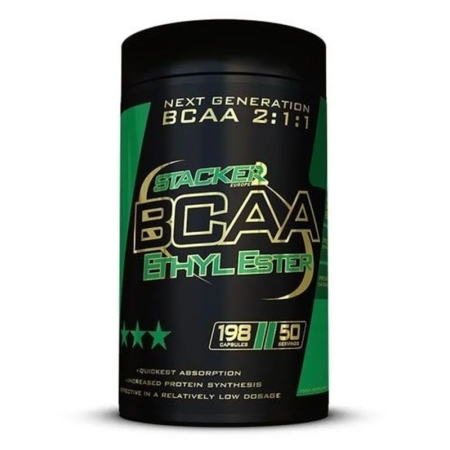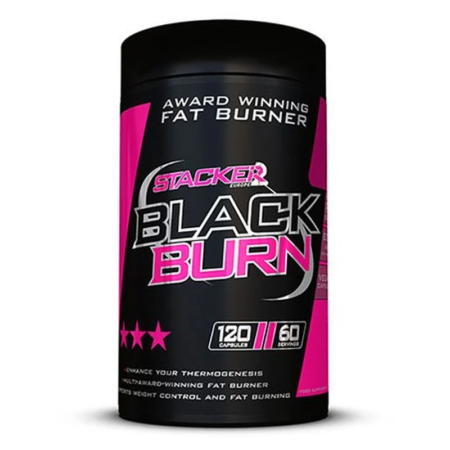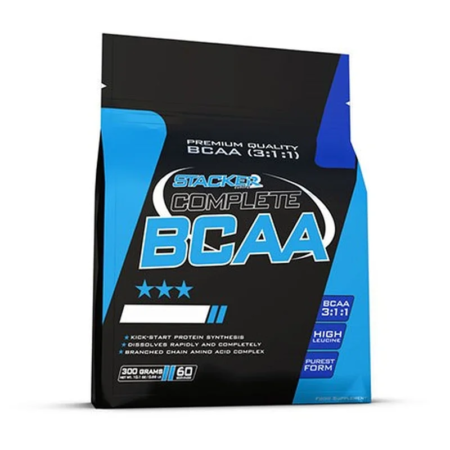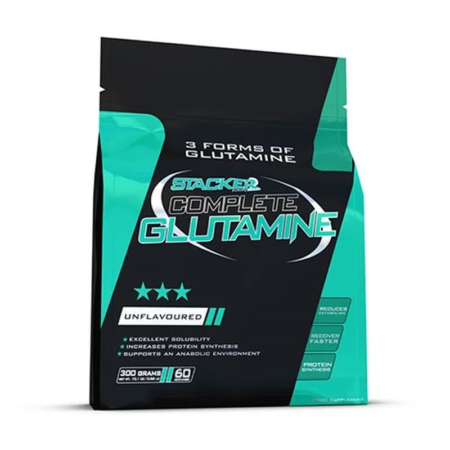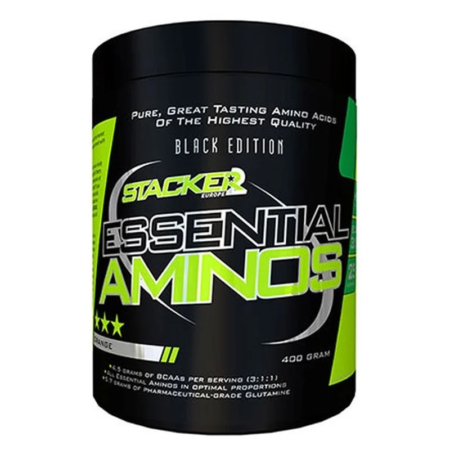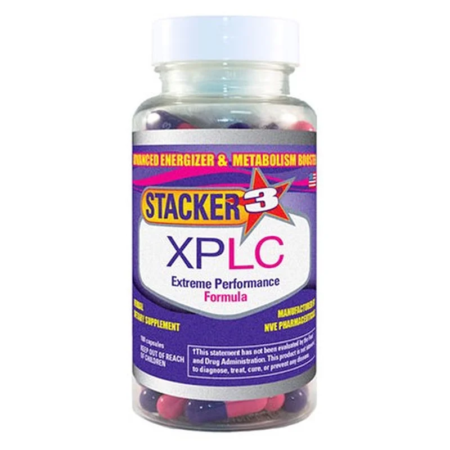What are amino acids? Amino acids explained simply and easily
Simple, but true: There is no life without amino acids. Amino acids are the micromolecules, the building blocks of proteins and are jointly responsible for almost all processes in the human body. For example, they regulate the function of muscles, organs, arteries, glands and tendons, but also transport nutrients and oxygen throughout the body. Both hormones and antibodies consist of amino acids. Since, unlike carbohydrates and fat, they also contain nitrogen, they can even form tissue, organs, skin, hair and muscles—which is why they play a special role in building muscle in bodybuilders and athletes. There are more than 400 known non-proteinogenic amino acids, which have biological functions, as well as 20 or 22 proteinogenic—protein-building—amino acids.
More about the classification of amino acids, proteinogenic amino acids, essential amino acids, the production of amino acids, BCAAs (branched-chain amino acids) and much more can be found here.
No products found which match your selection.
Proteinogenic amino acids: Amino acids and protein
All proteins consist of differently linked amino acids. The process of regenerating proteins from amino acids is called protein biosynthesis (PBS). The arrangement, number and type of amino acids determine the resulting protein. Short amino acid chains are called peptides. Only when a length of 100 amino acids is achieved do we speak of proteins. Most Proteins consist of chains of 100 to 300 amino acids.
The amino acids linked as building blocks for the formation of proteins are also known as protein-building or proteinogenic amino acids. In addition to the 20 proteinogenic amino acids in humans, also called canonical amino acids, there are two further amino acids: selenocysteine and pyrrolysine.
The 20 proteinogenic amino acids are:
- Alanine
- Arginine
- Asparagine
- Aspartic acid
- Cysteine
- Glutamine
- Glutamic acid
- Glycine
- Histidine
- Isoleucine
- Leucine
- Lysine
- Methionine
- Phenylalanine
- Proline
- Serine
- Threonine
- Tryptophan
- Tyrosine
- Valine
The body can build the two other proteinogenic amino acids into proteins by recoding genetic material. Selenocysteine and pyrrolysine are therefore also referred to as the 21st and 22nd proteinogenic amino acids.
Essential amino acids
Eight of the 20 proteinogenic amino acids cannot be produced by the human organism itself. These are called indispensable or essential amino acids. However, as the body urgently needs these amino acids, they must be ingested with food or dietary supplements.
The eight essential amino acids are:
- Isoleucine
- Leucine
- Lysine
- Methionine
- Phenylalanine
- Threonine
- Tryptophan
- Valine
Cysteine and tyrosine are also considered essential amino acids for children and pregnant women, as their bodies cannot (yet) produce the amino acids themselves or can only do so in too small a dose.
Arginine and histidine rank among the semi-essential amino acids. These only need to be ingested through food in certain cases, for example during growth phases or after severe injuries.
Non-essential amino acids are either synthesized directly in the body or produced from other amino acids by modification.
Amino acid production and extraction
Amino acids are produced either from natural substances or by synthetic processes. The natural amino acids are marked with a prefixed L, e.g. l-lysine. A source protein is broken down into its individual building blocks—the amino acids—by a pre-digestion process, the so-called hydrolysis process, either by acid splitting or with the aid of digestive enzymes. Since the middle of the 19th century, chemists have been developing different methods of synthesis, some of which are no longer relevant due to low yields or other difficulties.
Today, amino acids are mainly produced industrially using various processes. To indicate such production, a prefixed D is used, for example d-lysine.
The chemical methods of producing amino acids are:
1. extraction method
2. chemical synthesis
3. enzymatic process
4. fermentation process
Most d-amino acids are produced by fermentation. Suitable microorganisms such as bacteria are used for this purpose. The amino acids thus produced can be purchased and consumed, for example, as amino acid capsules or powders.
Amino acids & nutrition: not just for athletes and bodybuilders
People who think of amino acids usually associate it first of all with bodybuilding and weight training. However, amino acids are important for everyone’s nutrition.
If the body lacks an amino acid, the function of all proteins may be impaired. Common consequences include decreased performance, greater susceptibility to infection, joint problems, or muscle-building problems. The more a particular amino acid is lacking in the diet, the greater the reduction becomes in the availability of other amino acids.
All essential or semi-essential amino acids required by the human body are contained in animal or plant foods and dietary supplements such as amino acid capsules. Vegetarian foods often contain a lower proportion of proteins and amino acids. It should also be noted that cooked or fried foods lose not only vitamins, trace elements and minerals, but also amino acids during the cooking process. The advantage of amino acids in the form of dietary supplements is that they contain no fats or salts and their formulation is optimized for their specific purpose.
The metabolism of amino acids occurs mainly in the liver. Therefore, an overdose of amino acids can cause health consequences such as liver or kidney damage. Branched chain amino acids (BCAAs) are metabolized to a lesser extent in the liver, but rather more so in other tissues
The effect of amino acids
The most important areas of application for amino acids are:
- Arthrosis
- Erectile dysfunction and increased fertility
- Sleep support
- Diabetes
- Hair loss
- Weight loss (especially Carnitine)
- Muscle building (especially BCAAs)
Amino acids for bodybuilding and endurance sports
Because amino acids have a positive effect on muscle building, they are popular with bodybuilders, endurance athletes and all other athletes. It has been known for a long time that a lack of amino acids impairs performance, while a good supply has a positive effect on muscle building and regeneration. The additional intake of amino acids through supplements is especially important for hard-training athletes.
In muscle building and definition phases, amino acids support muscle development; in low carb phases they help maintain muscle mass.
The most important amino acids and most popular supplements in sports are: BCAAs, Creatine, Glutamine, Arginine and Beta Alanine.
BCAAs
Because of the physical strain caused by endurance or weight training, there is an increased need for amino acids. BCAAs in particular are very popular because of their anabolic and anti-catabolic effects, i.e. muscle-building and muscle-maintaining effects. BCAAs are among the most important amino acids in weight training. Supplements with a particularly high proportion of branched-chain amino acids (BCAAs) are quickly absorbed and utilized by the body. Within about 30 to 45 minutes the BCAAs are in the bloodstream and provide the body with the cell building blocks needed for muscle building and regeneration. Find out more about BCAAs here.
Creatine
Creatine is only partially an amino acid. The combination of three amino acids (methionine, glycine and arginine) is produced by the body itself in the liver, pancreas and kidneys. It increases performance during training sessions, which is why creatine is often taken as a supplement by bodybuilders, fitness athletes and competitive athletes. If you want to know more about creatine, read on here
Glutamine
At about 60%, l-glutamine is the most abundant amino acid in the human body, e.g. in muscle tissue. Your body itself can produce glutamine, but the additional intake of glutamine is especially popular with bodybuilders and top athletes. That’s because in addition to the positive influence on the intestinal flora, glutamine is responsible for metabolic processes in muscles, for better concentration and for a strong immune system. Further information about l-glutamine can be found here
Arginine
Arginine—also called l-arginine—is one of the essential amino acids; it also contains a carboxylic acid group in addition to an amino acid group. Arginine also belongs to the semi-essential amino acids, i.e. it should be taken as a supplement in certain cases, for example in growth phases or after serious injuries. Because arginine functions as a vasodilator, it is very popular with bodybuilders as a “pump supplement”. You can learn more about arginine here.
Carnitine
L-carnitine is a transport molecule for fatty acids that can improve your fat burning and help you lose weight. Carnitine is a combination of the amino acids lysine and methionine and is involved in the supply of fatty acids for energy production. As a supplement, carnitine is often referred to as a fat burner and can help you achieve your personal diet and fitness goals. More information about l-carnitine can be found here.
If we can help you choose the right amino acid supplements, please contact us!
Customers are interested in: ECA Stack, Pre Workout Boosters, Ephedrine HCL, Fatburner Capsules, Fat burner Tablets, Fat Burners, Yohimbine Hcl, Pre Workout, Workout, Shop.
Fatburners.at @ Social Media: LIKE & FOLLOW US!!


